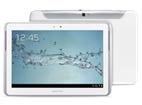During the past half-decade or so, Android has emerged as the predominant operating system, in terms of numbers installed, in mobile devices. Windows has remained king of the gradually shrinking desktop kingdom. Windows has had marginal impact on mobility and Android even less in PCs.
One of the trends at the huge CES show in Las Vegas this week is the emergence of devices that support both OSes. Barry Levine at Newsfactor reported on the moves. He pointed out that virtualized machines that support both are not new. What is new is the smooth way in which they combine the OSes and allow users to fluidly switch from one to the other:
Instead of shutting down one OS and booting the other, as is currently possible in a dual-boot machine, the idea is to seamlessly move between the two competing operating systems via a button click. Intel’s approach focuses on its system-on-a-chip products, while AMD’s utilizes software from BlueStacks to run Android inside Windows.
GigaOm’s Kevin Tofel test drove Intel’s approach on the Asus Transformer Book Duet running Windows 8.1 and Android 4.2.2. He liked the push-button approach to OS switching and gave the implementation qualified approval:
The implementation of running both operating systems isn’t bad, although there’s a small delay during the OS switch. I also didn’t see any integration between the two: I don’t think you’ll get Android notifications when working in Windows, for example. That could change between now and time of availability of course.
AMD’s take is a bit different, according to The Verge’s Sean Hollister. The company is working with BlueStacks to run Android within Windows, which offers the ability to launch individual Android apps from the Windows 8 Start Screen. The story quotes BlueStacks CEO Rosen Sharma on what is different in the AMD implementation:
While earlier downloadable versions of BlueStacks would run Android apps on Windows by virtualizing their ARM code to run on x86 processors, the version that will ship with some new AMD computers could run code natively on the ARM components.
It seems as if the technical issues are well under control. The bigger issue is the size of the market for dual OS devices. That comes down to the question of whether there is a constituency beyond geeks who really care enough to pay to have access to two.



